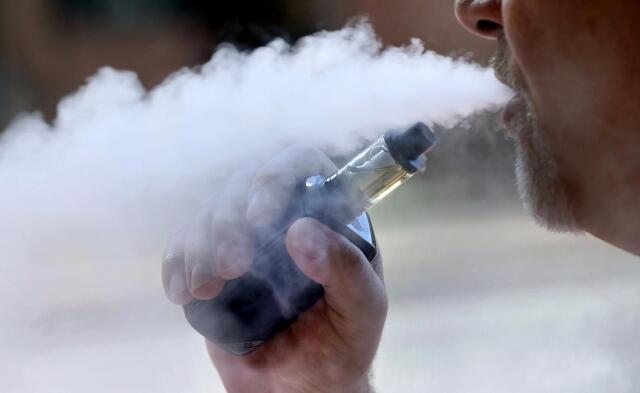Vaping products were considered as less harmful for smokers seeking an alternative to cigarettes.
VAPING is at least 95% less harmful than smoking, but that does not mean it is safe and healthy and the best alternative to cigarettes.
An evidence update on the growing fad by Public Health England found that while vaping may not be 100% safe, most of the chemicals causing smoking-related diseases were absent, and the chemicals present posed limited danger.
Vape or electronic nicotine and non-nicotine delivery systems/electronic vapour products or e-cigarettes are electronically/battery operated products, unlike cigarettes.
Vapour Products Association chief executive Asanda Gcoyi said: “The vapes are designed to deliver an aerosol to users by heating a solution comprised of propylene glycol, vegetable glycerin, flavouring and nicotine, although some e-liquid does not contain nicotine.
“The aerosol is commonly referred to as vapour. Using an e-cigarette is commonly known as vaping. Unlike cigarettes, the vape products do not contain tobacco in any form and are free from tobacco leaf extracts.”
She also highlighted that vaping products were considered as less harmful for smokers seeking an alternative to cigarettes.
“Smoking is the inhalation of the smoke from the burning tobacco of a cigarette. Cigarettes contain a combination of harmful chemical compounds.
“Tar, carbon monoxide and nicotine are the mainstream components of the smoke, but they alone are not responsible for the harmful effects associated with smoking and passive smoking,” said Gcoyi.
She said a study conducted in the United Kingdom concluded that e-cigarettes may be a unique harm reduction innovation for smoking relapse prevention.
“E-cigarettes meet the needs of some ex-smokers by substituting physical, psychological, social, cultural and identity-related aspects of tobacco addiction.”
Some vapers had reported that they found vaping pleasurable and enjoyable, and more than a substitute to cigarettes, and said they actually preferred it, over time, to tobacco smoking.
Gcoyi said this clearly suggested that vaping was a viable long-term substitute for smoking, with substantial implications for tobacco harm reduction.
Research has shown that it is not always easy for smokers to quit smoking and switch to vaping.
Gcoyi said that based on several reviewed studies, vaping had been proven to be the most effective way for smokers to quit when compared with other methods.
“A combination of the will to quit, correct device and e-liquid, as well as support from family or friends and good advice from vape shops, the smoker has a very good chance of switching completely.”
Factors such as misinformation surrounding vaping has also proven detrimental to users that have switched and unfortunately have returned back to smoking.
She said the price of the devices was another stumbling block, as it could prevent a smoker from making that switch purely based on the ability to purchase the correct device that they would need to achieve success.
But, research has also proven that using e-cigarettes, or vaping, is bad for the lungs, although research about exactly how vaping affects the lungs is in the initial stages, lung cancer surgeons have said.
According to one report: “In the last 24 to 36 months, we have seen an explosive uptick of patients who vape. With tobacco, we have six decades of rigorous studies to show which of the 7,000 chemicals inhaled during smoking impact the lungs. But with vaping, we simply don’t know the short- or long-term effects yet and which e-cigarette components are to blame.”
Although there’s no definitive answer at this point, experts do have a theory about how vaping harms lungs.
Both smoking and vaping involve heating a substance and inhaling the resulting fumes. With traditional cigarettes you inhale smoke from burning tobacco. With vaping, a device (typically a vape pen or a mod – an enhanced vape pen – that may look like a flash drive) heats up a liquid (called vape juice or e-liquid) until it turns into a vapour that you inhale.
“Vaping is a delivery system similar to a nebuliser, which people with asthma or other lung conditions may be familiar with,” says one expert. “A nebuliser turns liquid medicine into a mist that patients breathe in. It’s a highly effective way of delivering medicine to the lungs.”
Instead of bathing lung tissue with a therapeutic mist, just as a nebuliser does, vaping coats lungs with potentially harmful chemicals. E-liquid concoctions usually include some mix of flavourings, aromatic additives and nicotine or THC (the chemical in marijuana that causes psychological effects), dissolved in an oily liquid base.
“We think that some of the vaporised elements of the oil are getting deep down into the lungs and causing an inflammatory response,” the research explained.
The substance at the centre of investigation is vitamin E, often used as a thickening and delivery agent in e-liquid. And, while it’s safe when taken orally as a supplement or used on the skin, it’s likely an irritant when inhaled. It’s been found in the lungs of people with severe, vaping-related damage.
Pretoria News








